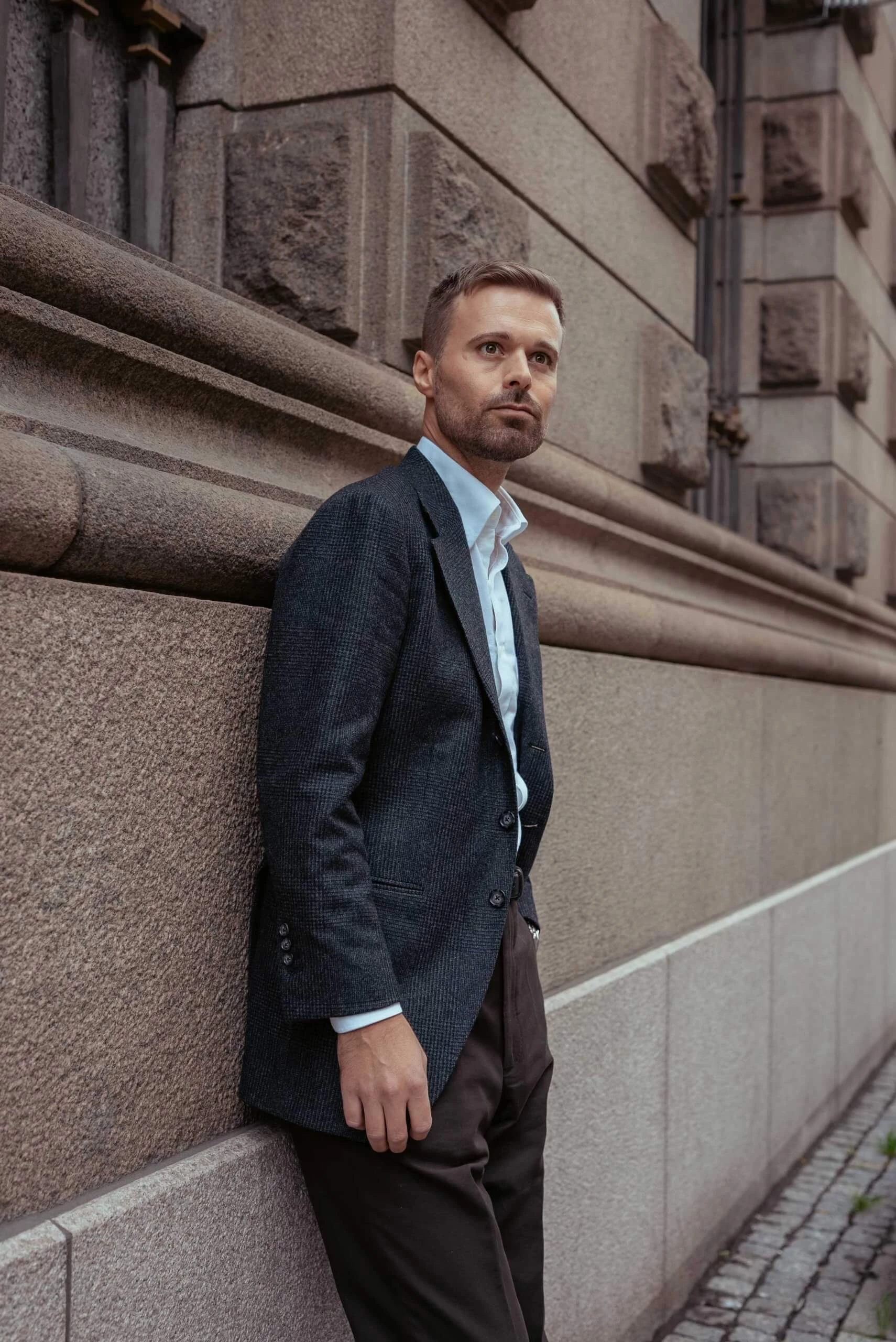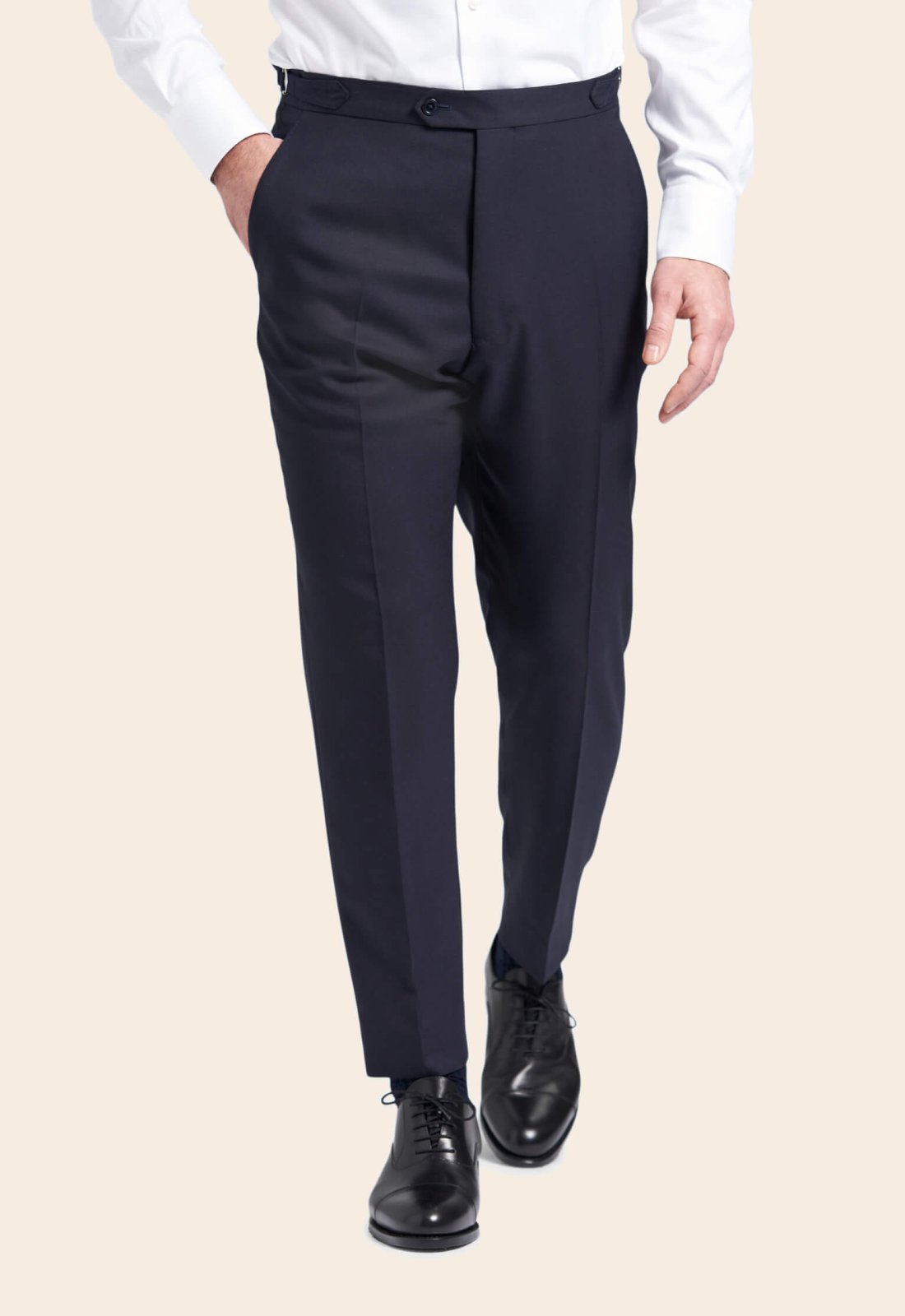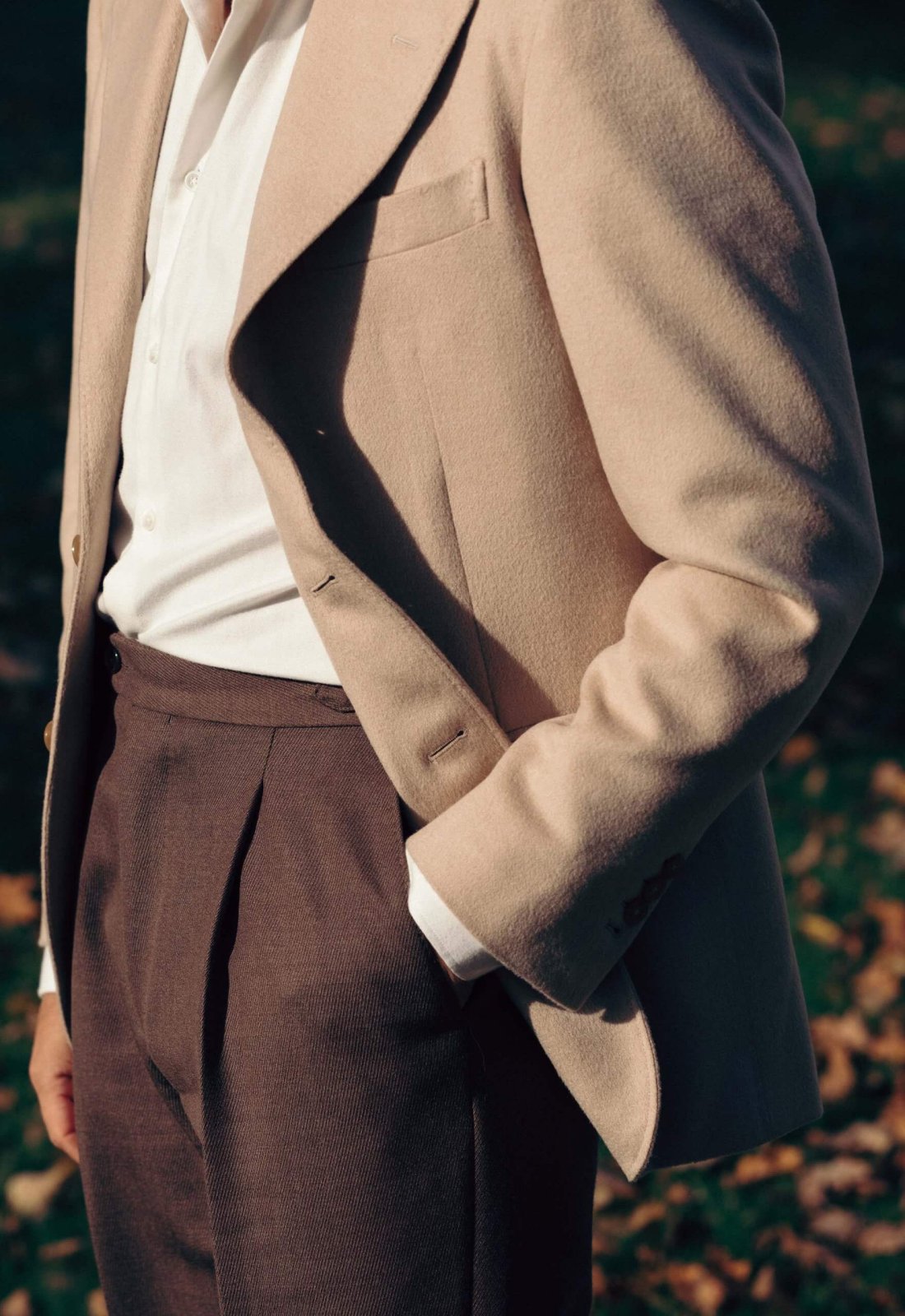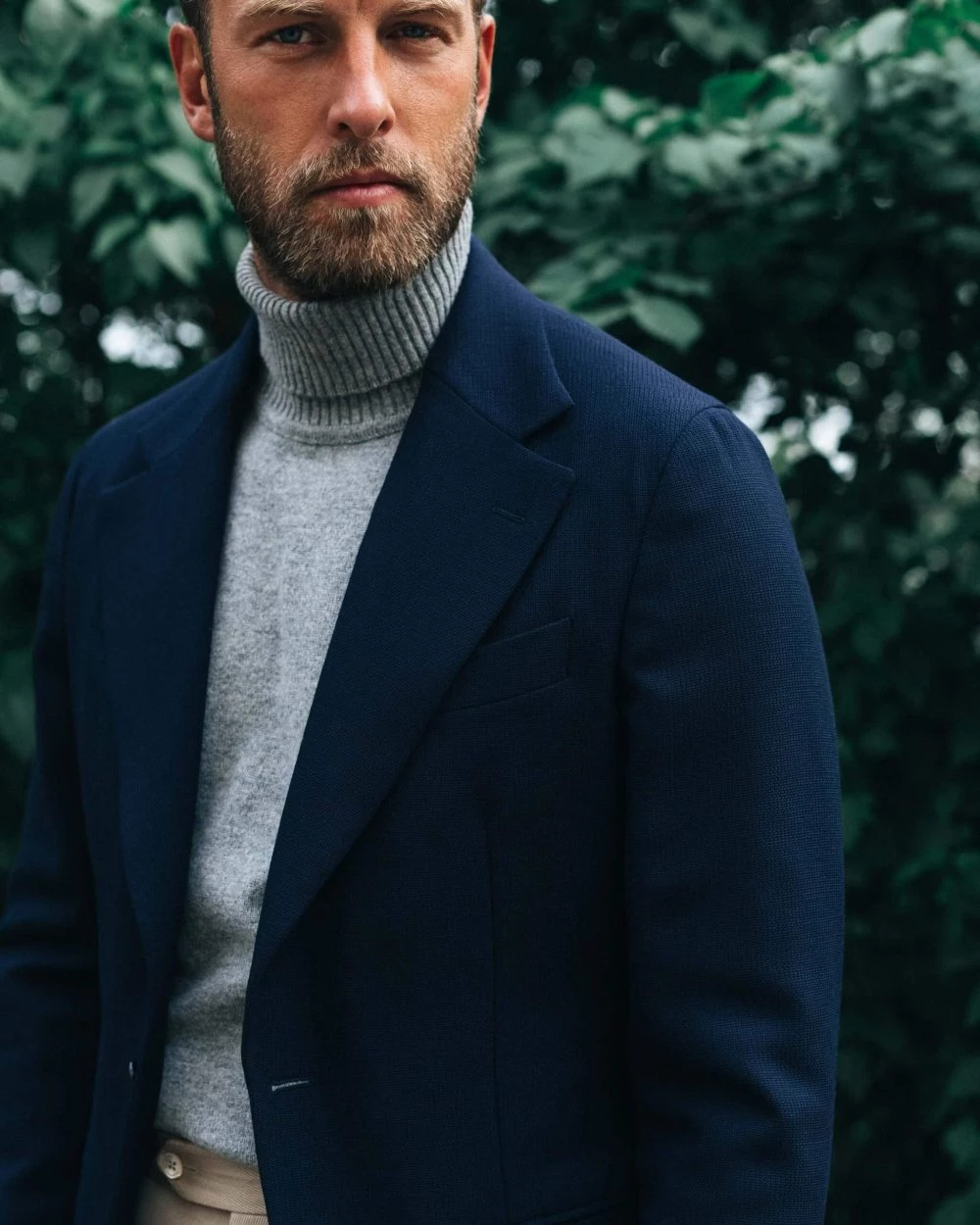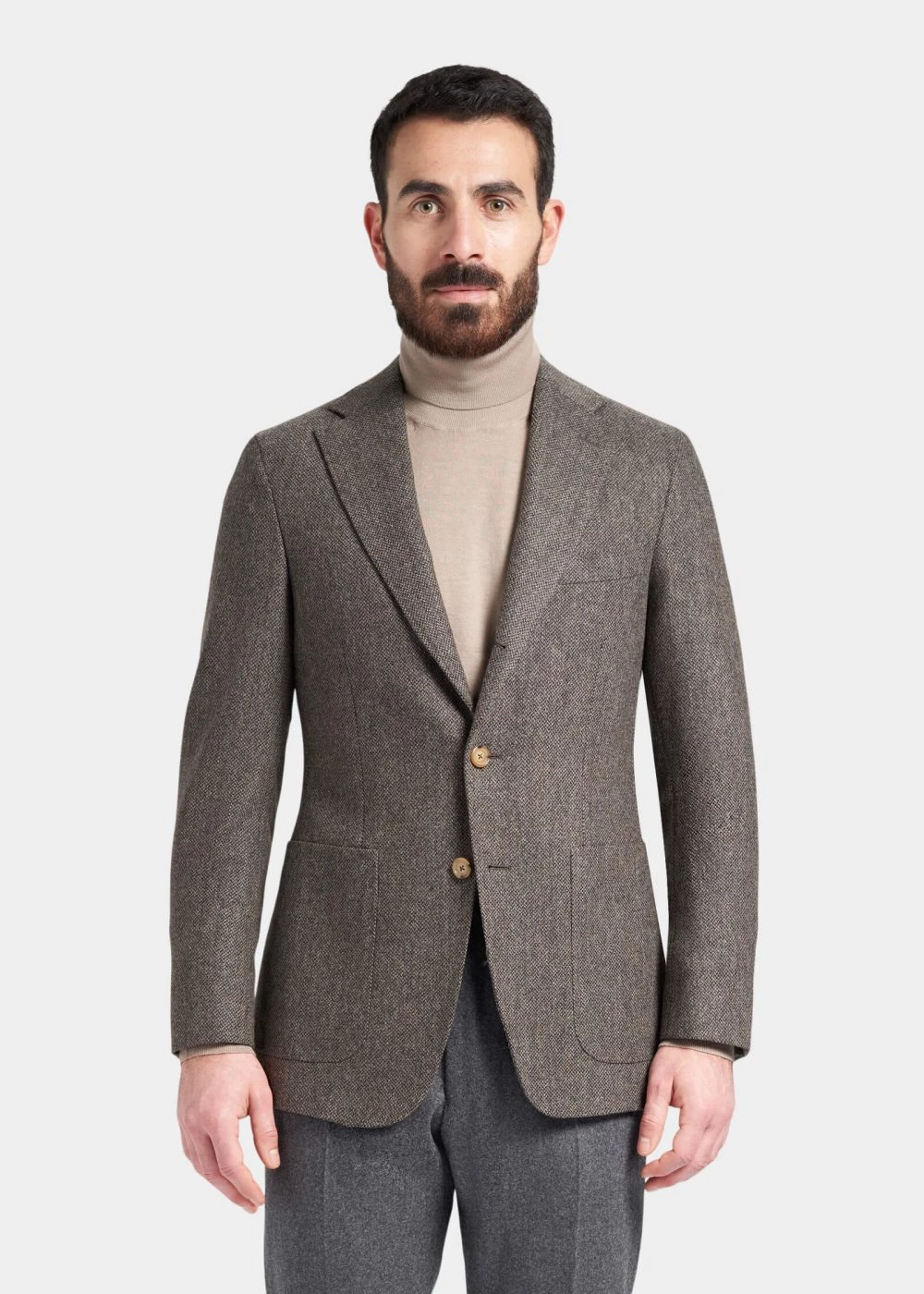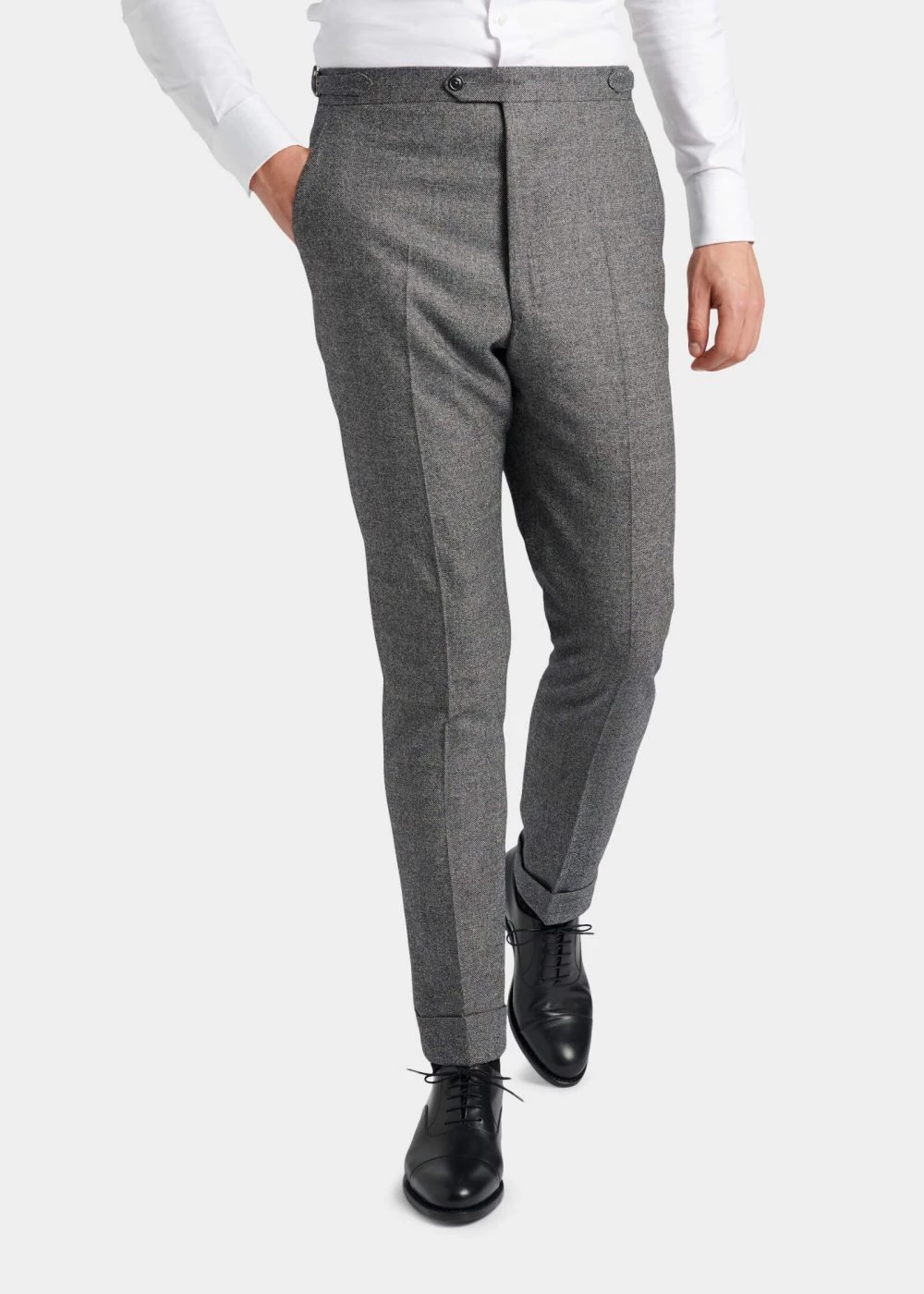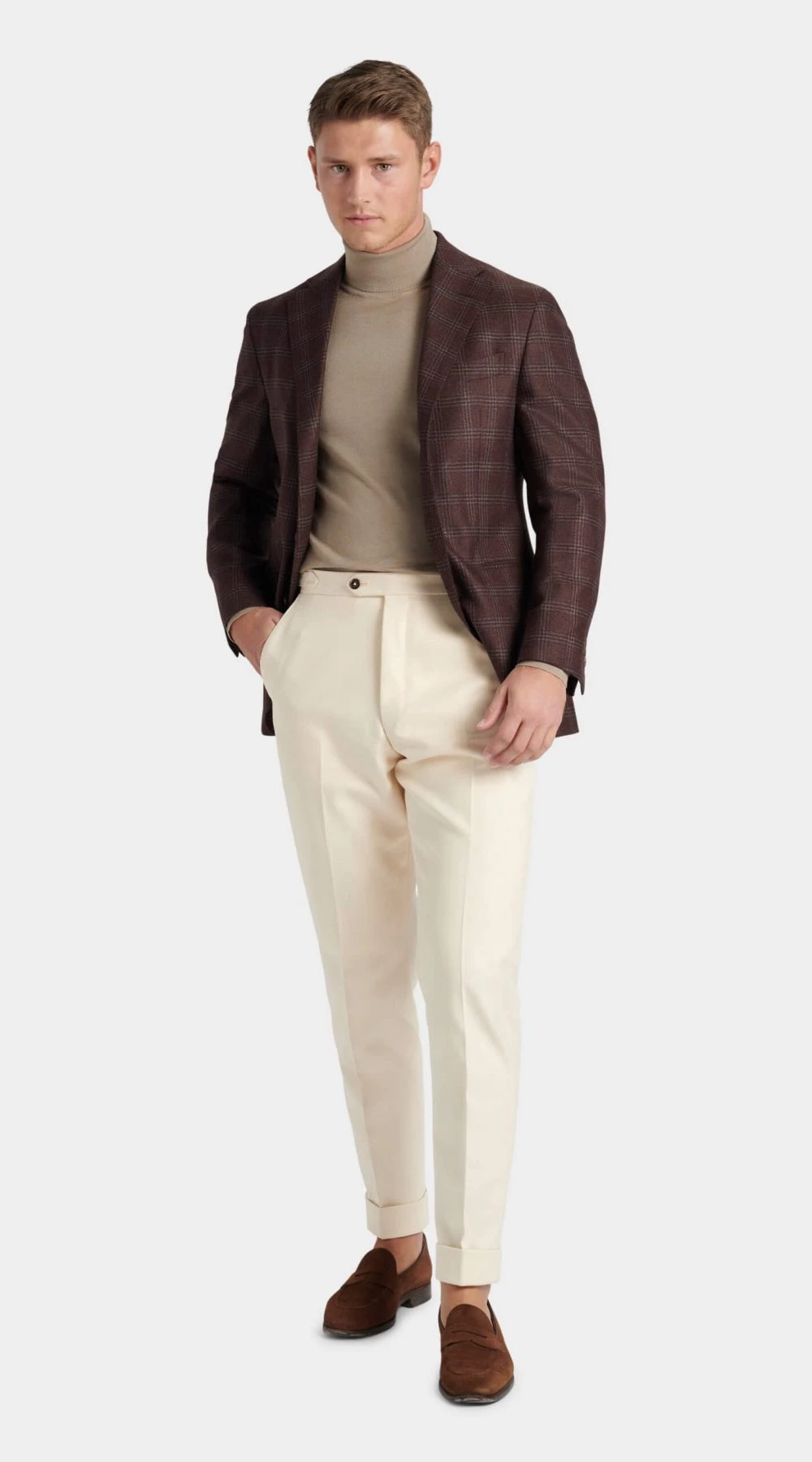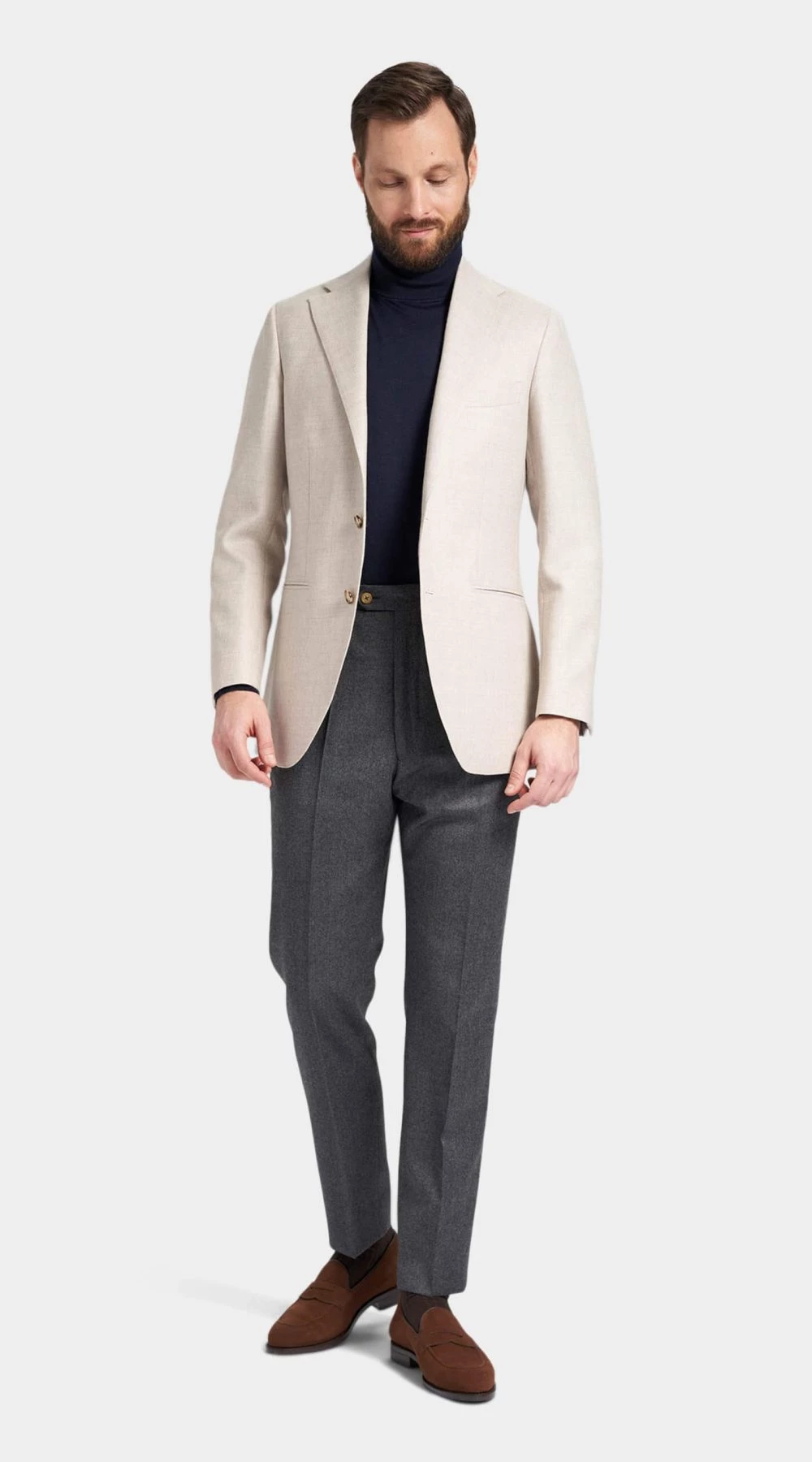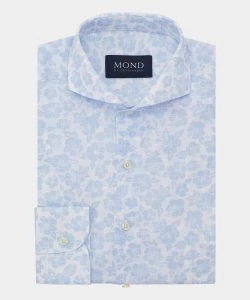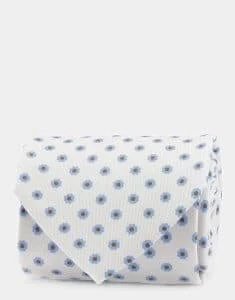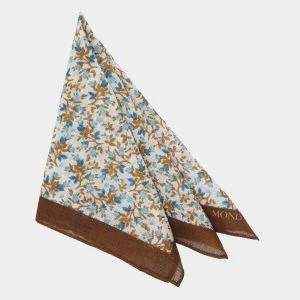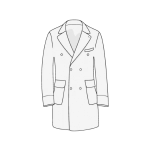Outfits composed of odd garments (as opposed to the matching coat, optional waistcoat, and trousers found in a suit) can be a great way to remain well-dressed in more relaxed environments. And, due to their more casual nature, such outfits can enable one to express a little more personality.
When starting out with tailored separates, it is important to be able to spot design features which look particularly good in this context.
If one wants a very casual and relaxed sports coat, then soft shoulders and patch pockets are a great idea as they can give a more nonchalant appearance imitating the laid-back, easy-going Italian approach to dressing. This style is great for sport coats which one wants to keep distinct from their suits, because patch pockets are not often seen on suit coats.
For a more put-together and formal sports coat, slanting flap pockets are a great idea, perhaps paired with a third ticket pocket and a stronger shoulder line. This gives off a very English countryside look, especially if the coat is made with a longer and more spacious cut.
Belt loops aren’t often recommended with suit trousers, as a belt can have the visual effect of horizontal bifurcation, splitting one’s silhouette in half at the waist or hips rather than allowing a continual visual line from the coat shoulders to the hem of the trousers. Odd trousers, however, are great candidates for belt loops, as “separates” outfits are both more casual and less geared toward the strict maintenance of smooth up-down visual lines. Additionally, belts can be a great way to add personality to a more casual outfit. Just make sure not to wear a waistcoat and a belt at the same time.
Colour
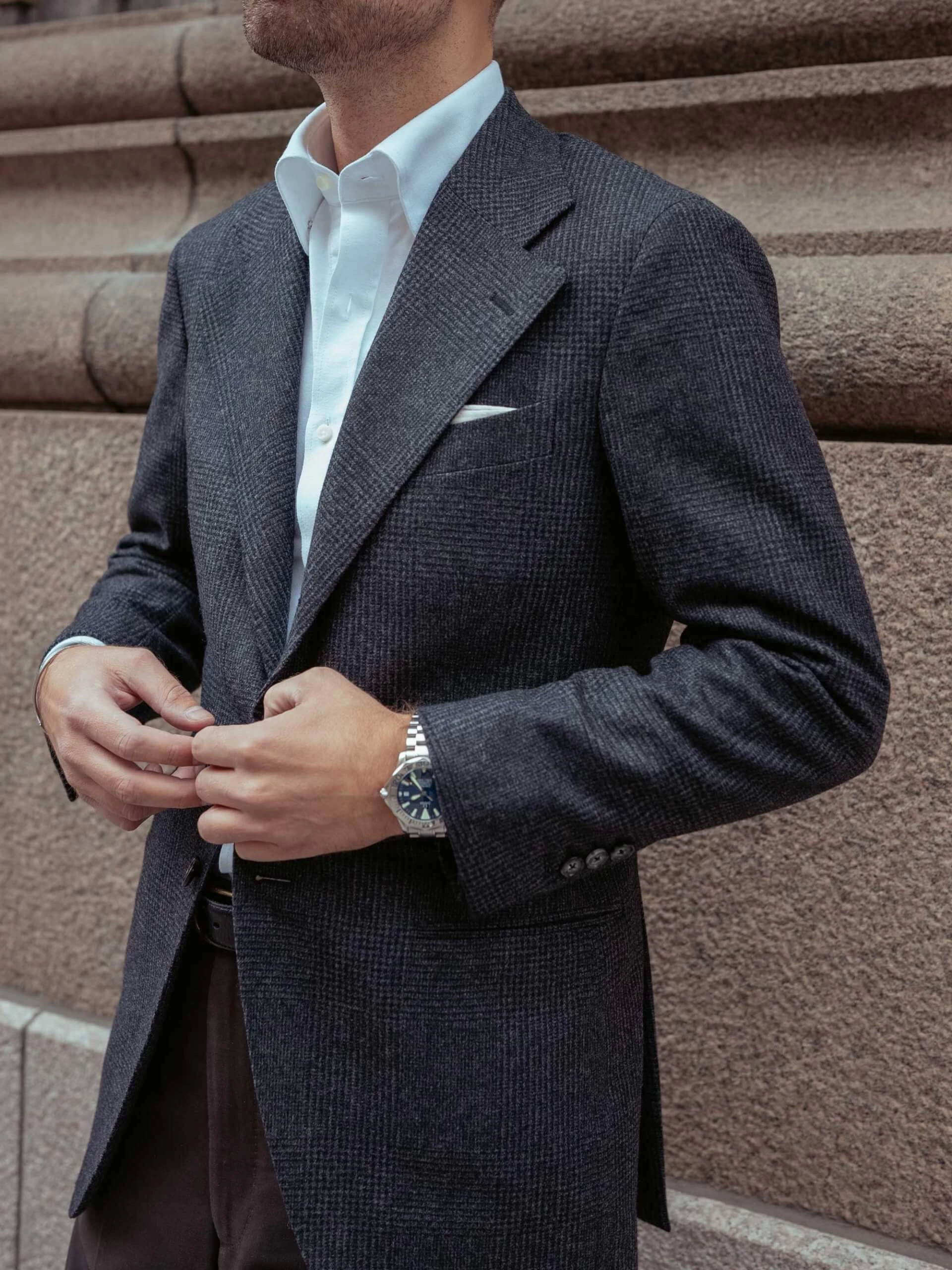
Combining separate pieces from one’s wardrobe can give one access to a vast array of options which are often more colourful, creative, and always more casual than a suit. In line with this principle, it is important that “separates” outfits are composed so as not to be easily mistaken for suits, as they serve a different, and much more relaxed, purpose in one’s wardrobe.
When combining separates, there are a few major points we would say are worth considering, the first of which is colour. Generally, it is easier to combine separates when one item (usually the coat) contains numerous colours, and one item (usually the trousers) is one solid colour. If this is the case, there are a few approaches one can take.
A second, and slightly more difficult, approach one could employ would be to compliment one of the colours in the coat. There are several different ways to go about this, including but not limited to:
- Choosing to wear a different shade of one of the colours in the coat. For the above example of a baby blue and brown coat, one might consider navy or taupe trousers.
- Selecting a colour from within the same family as one from the coat. The brown in the coat would allow one to pair it with other neutral earth tones. And as baby blue is a pastel colour, one could wear trousers in another pastel colour such as lilac, pale pink, or ecru for a bolder approach.
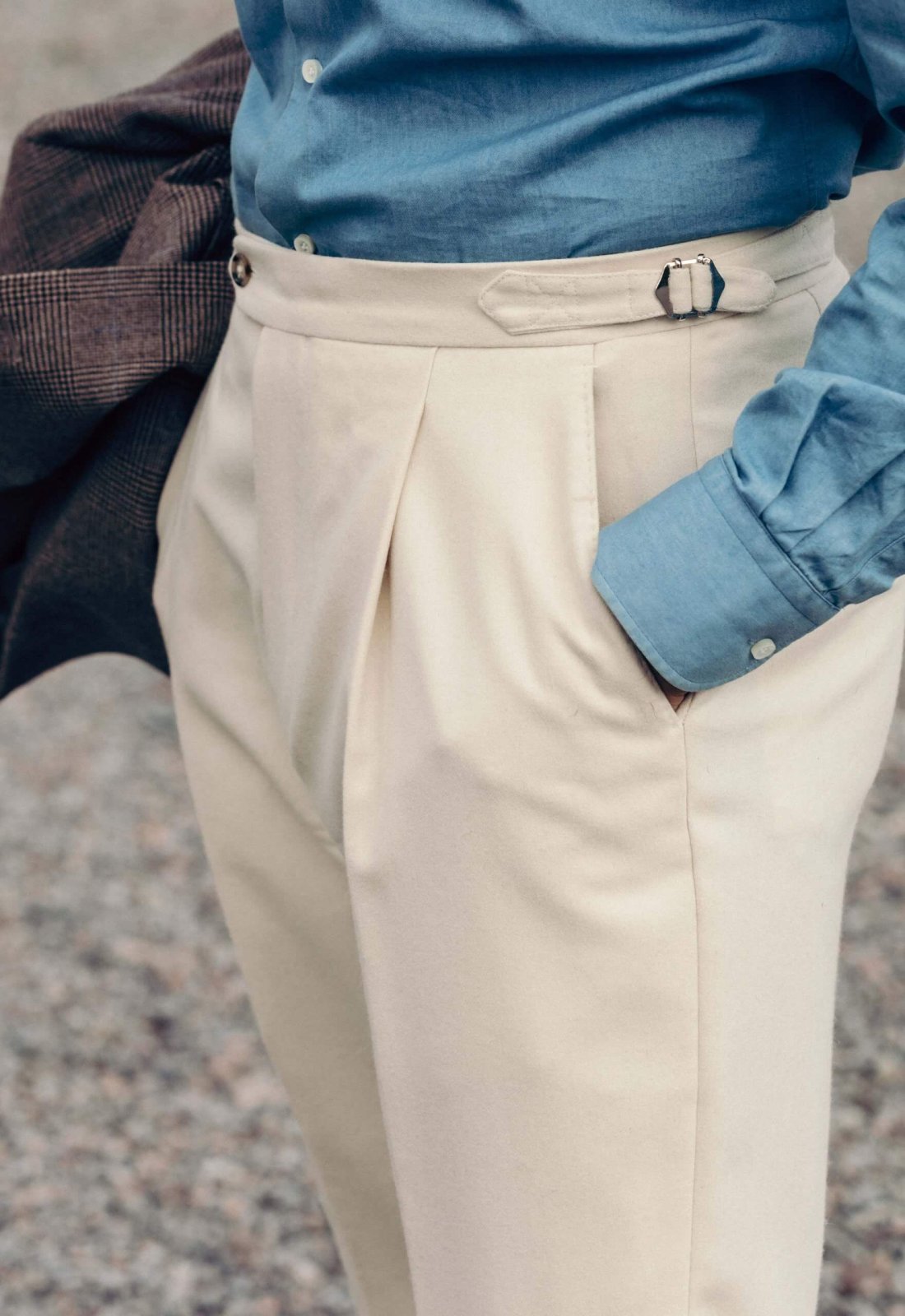
- Wearing grey trousers. As arguably the most neutral shade, grey can be worn with almost every colour and still look incredibly clean. One thing to consider here is the contrast in brightness between the coat and trousers. For a lighter or brighter sports coat, one may want to either match its intensity with light grey trousers or go for the more subdued option of a darker mid-grey or even charcoal grey.
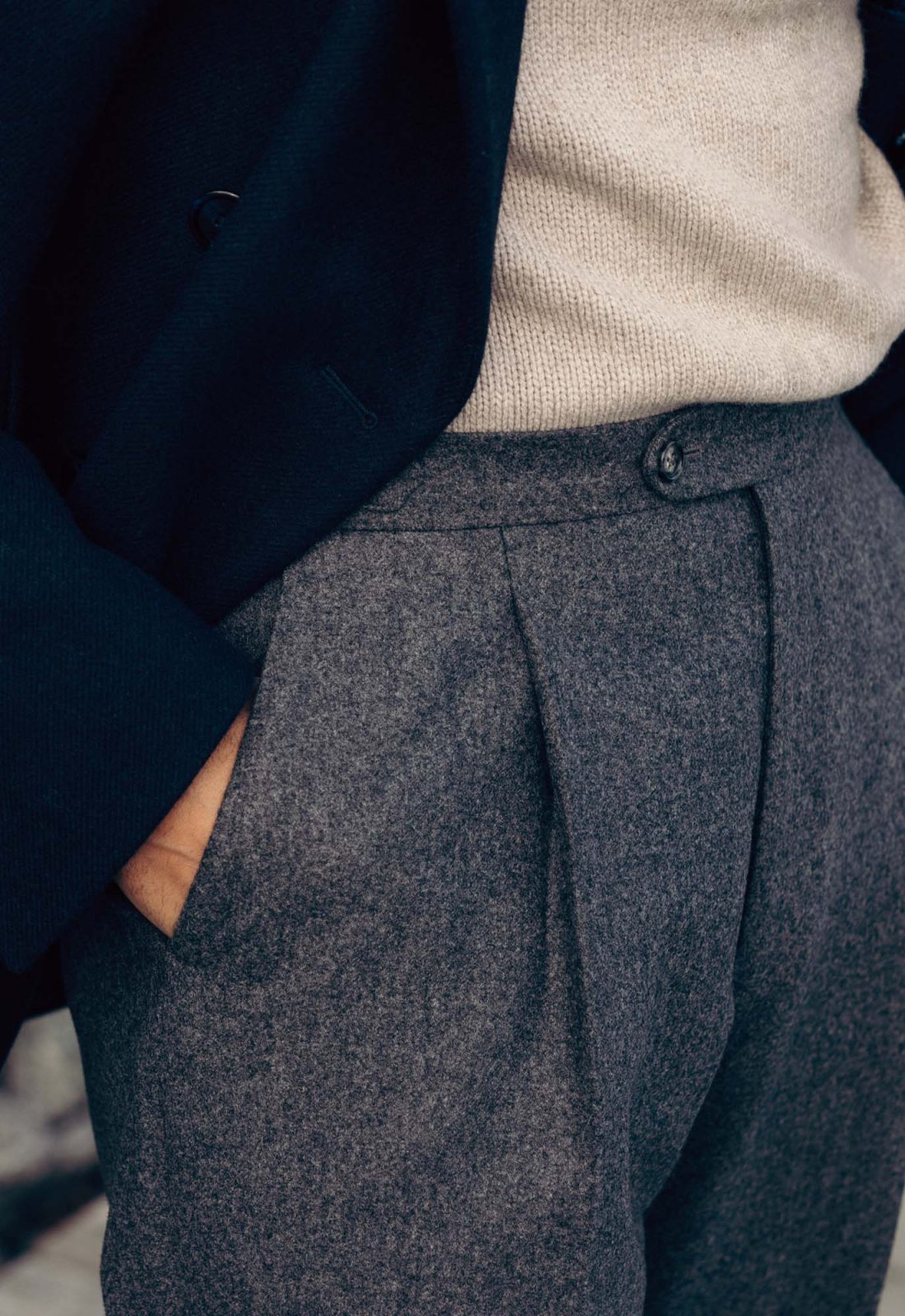
Assuming one was wearing a checked sports coat in brown and baby blue, the first approach would be choosing trousers to match exactly with one of the colours in the coat, such as these trousers which perfectly match the background beige colour. This can create a very harmonious colour palette. It can also produce a rather flattering silhouette due to the vertical lines caused by the continuous flow of one colour from the hem of your trousers all the way up to your shoulders. But beware of matching the main colour of the sports coat, as this can sometimes result in too little contrast between garments.
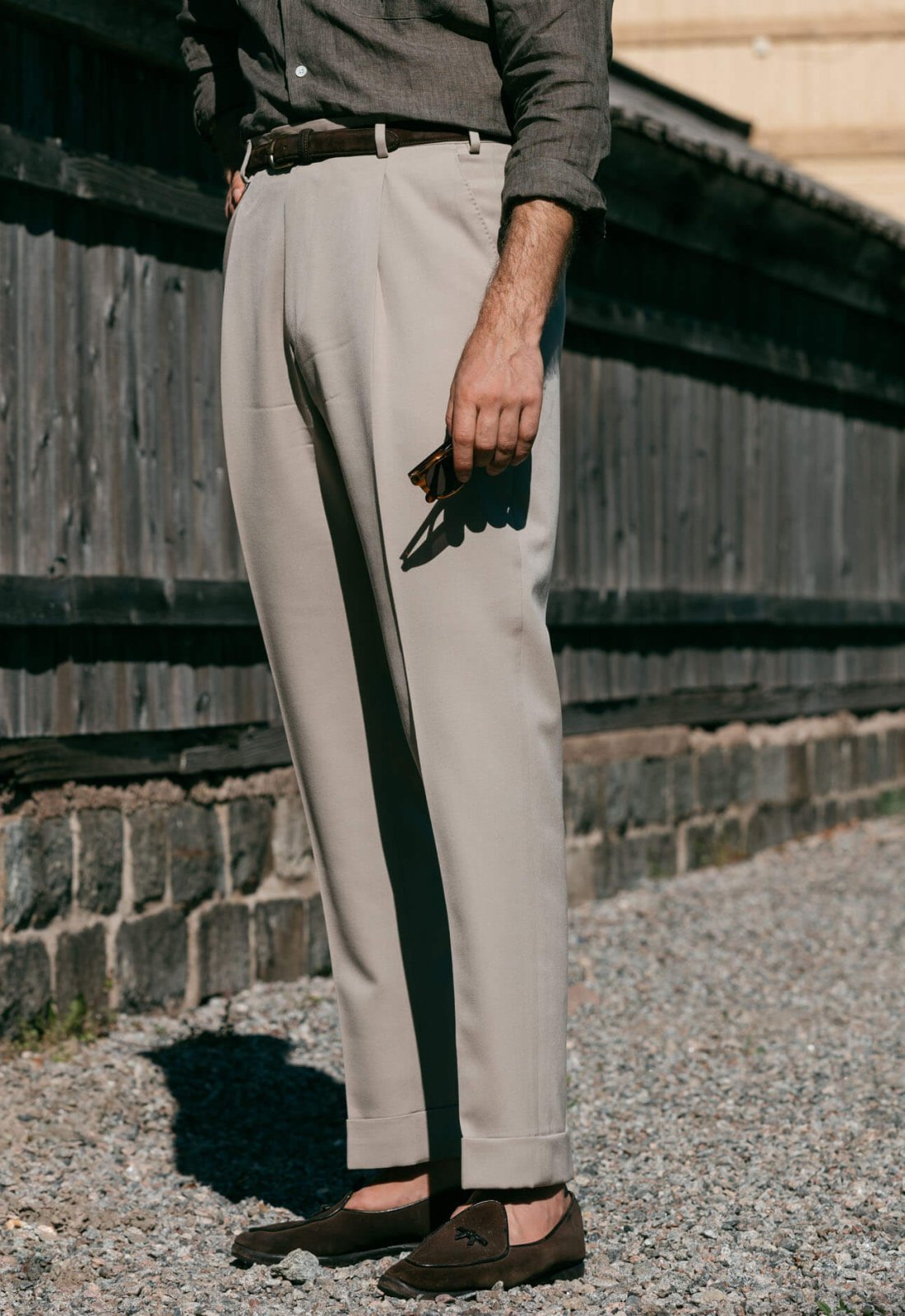
The latter two of these approaches can also be employed when combining separates which only contain one solid colour each, whilst still complying with the first piece of advice. Suits are, by definition, a coat, an optional waistcoat, and a pair of trousers cut from the exact same cloth. Separates, therefore, look best when they take advantage of the fact that they are not the same cloth.
When pairing plain separates of the same colour (a navy blazer with blue trousers, for example) it is important that the colours are dissimilar enough to be clearly distinct from one another. The same principle can be employed when pairing separates of different colours such as grey, blue, and brown. All three of these colours in their darkest forms can look almost indistinguishable from one another, so it is often best not to pair midnight blue with charcoal grey and a deep chocolate brown. Especially in the evening, when artificial light can further mask differences in colour between garments in an outfit.
Pattern and Texture
As well as providing one with more ways to wear and combine items from their existing wardrobe, the pursuit of tailored separates also allows one to dip their toes into a pool of fascinating textures and patterns which may be too intimidating at first for a full suit.
Tweed and corduroy suits are amazing (and can be incredibly tasteful) but wearing such things might seem a little too dandyish to the uninitiated. This is where I might suggest that one begins slowly. Perhaps wear a lighter tweed sports coat with grey trousers.
Or one might swap out their jeans for corduroy or cavalry twill with knitwear and a waxed jacket for a cold walk in the countryside. The world of tailored separates allows for a gradual broadening of one’s sartorial horizons in terms of texture and pattern. Sounds great, right? But where do you start? And how do you pair such new textures and patterns tastefully?
Let’s start with patterns.
When not worn as a full suit, patterns should feature mostly in one’s torso. Shirts, ties, waistcoats, coats, and overcoats. And trousers should generally serve to “ground” the outfit with solid colours. Deviating from this guideline will generally work for casual outfits with knitwear but might make tailored outfits look somewhat unbalanced with the notable exceptions of Morning Dress and Black Tie, which we’ll cover in later articles.
When combining patterns on your shirt, coat, tie, and pocket handkerchief, it is important to consider the type and scale of the patterns. Generally, it looks best if the frequency with which a pattern occurs in an outfit is proportional to its complexity. Of the four aforementioned garments (shirt, coat, tie, and pocket handkerchief) in a given outfit which might have a pattern, we’d propose the following guidelines:
- All four can be solids with no pattern to achieve a very clean and polished look.
- Avoid polka dots on the shirt and jacket, if wearing them on both the tie and pocket handkerchief, make sure they aren’t exactly the same colour and scale.
- Odd jackets (other than specific club blazers) and trousers (Other than morning dress) do not have stripes. This leaves shirts, ties, and occasionally pocket handkerchiefs as garments in a “separates” outfit which might have stripes. Wearing stripes across all three of these items can look extremely stylish provided there is enough contrast in colour and scale between the two. Striped or ribbed socks can be easily worn with any outfit, regardless of how few or how many stripes are present in other garments.
- Floral patterns are unusual as they tend to make shirts incredibly casual, think Hawaiian shirts but florals tend to be more formal than checks or stripes when it comes to ties and pocket handkerchiefs. As florals are often very complex in shape, they’re best limited to one item per outfit.
- Checks are the easiest, other than solids, to combine because they are innately casual, so slightly more daring combinations can work very well. It is uncommon to find checked pocket handkerchiefs, but checked sports coats, shirts, and ties are extremely common and can all be worn together if the colours are harmonious, and the scales don’t clash.
Texture
Texture is a much less complex affair when assembling outfits, as there is only really one overarching principle to consider: contrast. As opposed to colour and pattern, where high contrast is often the best way to build an outfit, fabrics of comparable texture are often best paired with one another.
Consider tweed, which is a very textured fabric. Best paired with whipcord, corduroy, cavalry twill, and flannel, all of which are also highly textured. A more textured tweed would look better with a wider whaled corduroy or a fluffier flannel, and a finer worsted tweed will pair better with slim whaled corduroy or lighter worsted flannel.
All of the above guidelines for colour, pattern, and texture can also be employed when adding an odd waistcoat to the equation. This will usually be in the form of a suit’s coat and trousers with an odd waistcoat. Or even when wearing a coat, waistcoat, and a pair of trousers all cut from a different cloth although this is much more difficult to do tastefully.
This all said, finding outfits that work for you can be tricky. The best way to find what works is to experiment. Have fun with it. After all, the stakes are very low. You’ll be better dressed than most men these days by simply wearing a sports coat.
